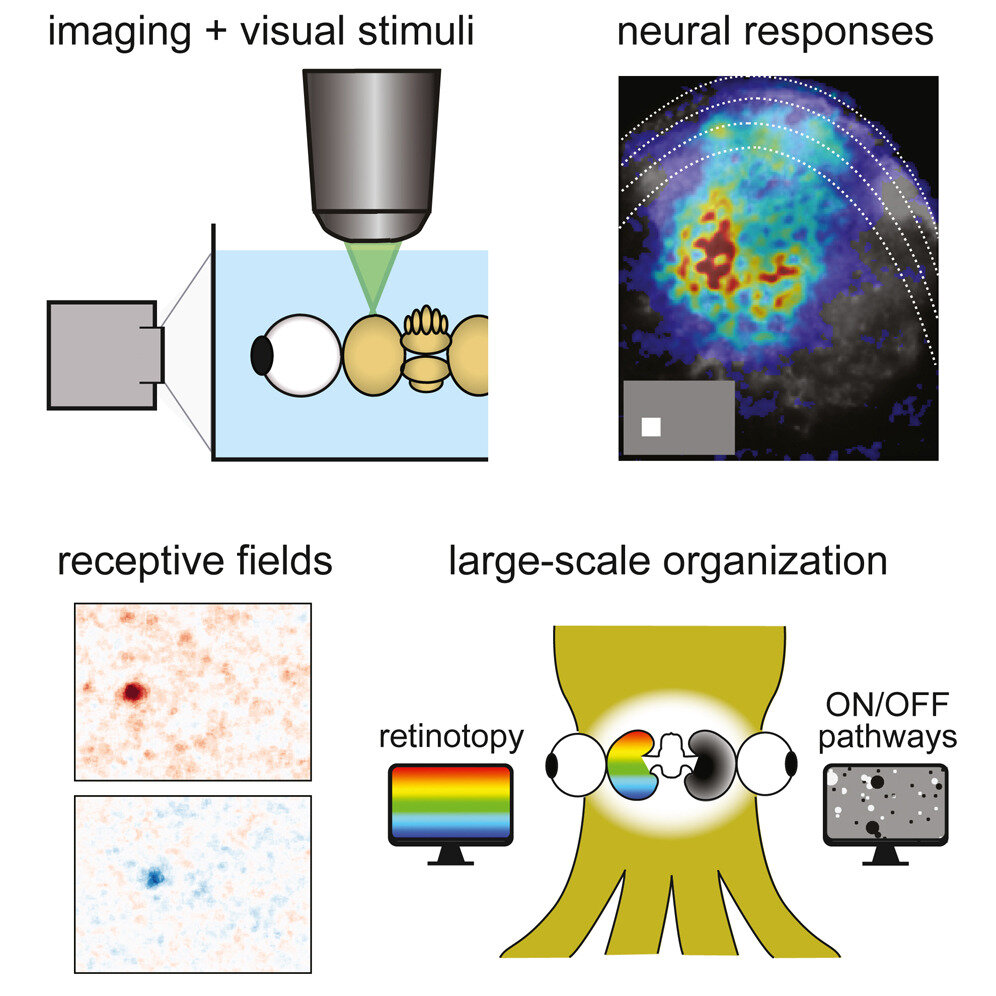An octopus dedicates approximately 70% of its brain to vision. However, until recently, scientists had only a limited understanding of how these marine creatures perceive their underwater environment. A groundbreaking study conducted by the University of Oregon has shed new light on the octopus’s visual perception.
In a first-ever endeavor, neuroscientists have recorded the neural activity from an octopus’s visual system. They have successfully mapped the octopus’s visual field by directly observing the neural response to light and dark spots in various positions.
The map of neural activity in the octopus’s visual system bears a striking resemblance to the human brain, despite octopuses having evolved their complex nervous systems independently over 500 million years, after diverging from a common ancestor. This groundbreaking research has been published in Current Biology by UO neuroscientist Cristopher Niell and his team.
“No one has ever recorded from the central visual system of a cephalopod before,” said Niell. Although octopuses and other cephalopods are not typically used as models for understanding vision, Niell’s team is captivated by their exceptional brains. Their previous study published in Current Biology last year identified different types of neurons in the octopus optic lobe, which is the brain region responsible for vision. Together, these findings create a solid foundation for understanding a novel visual system,” Niell explained.
In this latest study, researchers observed the neuronal response in the octopus’s visual system to moving light and dark spots on a screen. Through fluorescent microscopy, the researchers could witness the activity of neurons and observe their unique reactions based on the position of the spots.
“We discovered that each location in the optic lobe corresponded to a specific location on the animal’s front screen,” Niell remarked. “If we moved a spot, the response in the brain would shift accordingly.”
This one-to-one map is found in the human brain for multiple senses, such as vision and touch. Neuroscientists have established connections between the location of specific sensations and corresponding spots in the brain. An example of this representation is the homunculus, a cartoonish human figure where body parts are depicted proportionally based on the amount of brain space dedicated to processing sensory input from each body part. Sensitive areas like fingers and toes appear larger, while less sensitive areas are smaller.
However, establishing a clear link between the visual field and the octopus brain was not a guarantee. It is a complex evolutionary innovation, and some animals, like reptiles, lack such a map. Additionally, previous studies had suggested that octopuses do not possess a homunculus-like map for different parts of their body.
“We were hopeful that the visual map existed, but no one had directly observed it before,” Niell admitted.
The researchers also noted that octopus neurons exhibited a heightened response to small light spots and large dark spots, which is a distinct difference from the human visual system. Niell’s team speculates that this disparity may be attributed to the specific characteristics of the underwater environment that octopuses navigate. Looming predators may appear as large dark shadows, while nearby objects like food would manifest as small bright spots.
In their subsequent studies, the researchers aim to explore how the octopus brain responds to more complex images encountered in its natural environment. Ultimately, their goal is to uncover how octopuses perceive and interact with their world.
More information:
Judit R. Pungor et al, Functional organization of visual responses in the octopus optic lobe, Current Biology (2023). DOI: 10.1016/j.cub.2023.05.069
Citation:
Octopuses shown to map their visual landscape much like humans do (2023, June 20)
retrieved 21 June 2023
from https://phys.org/news/2023-06-octopuses-shown-visual-landscape-humans.html
This document is subject to copyright. Apart from any fair dealing for the purpose of private study or research, no
part may be reproduced without the written permission. The content is provided for information purposes only.
Denial of responsibility! TechCodex is an automatic aggregator of the all world’s media. In each content, the hyperlink to the primary source is specified. All trademarks belong to their rightful owners, and all materials to their authors. For any complaint, please reach us at – [email protected]. We will take necessary action within 24 hours.

Jessica Irvine is a tech enthusiast specializing in gadgets. From smart home devices to cutting-edge electronics, Jessica explores the world of consumer tech, offering readers comprehensive reviews, hands-on experiences, and expert insights into the coolest and most innovative gadgets on the market.


